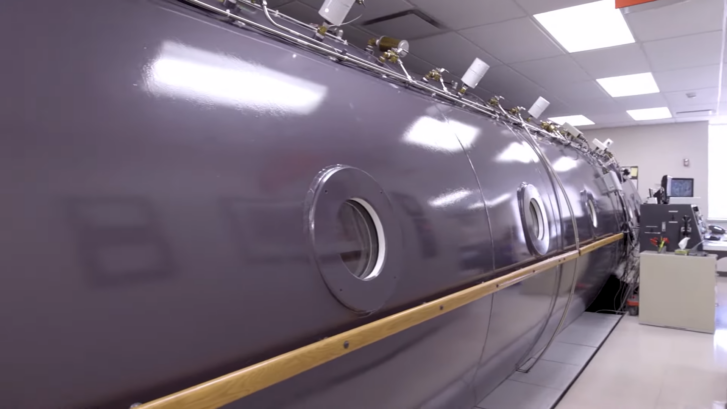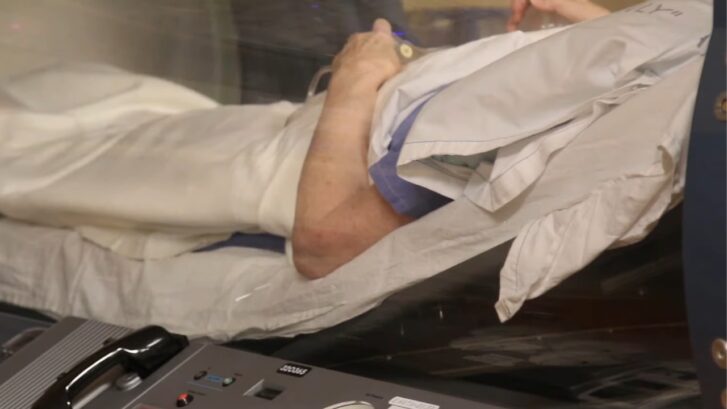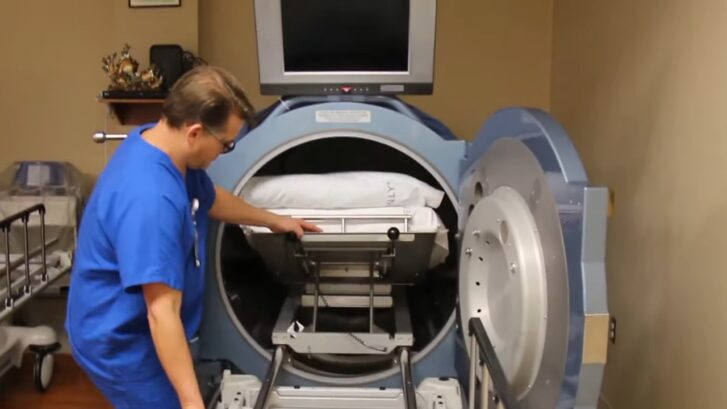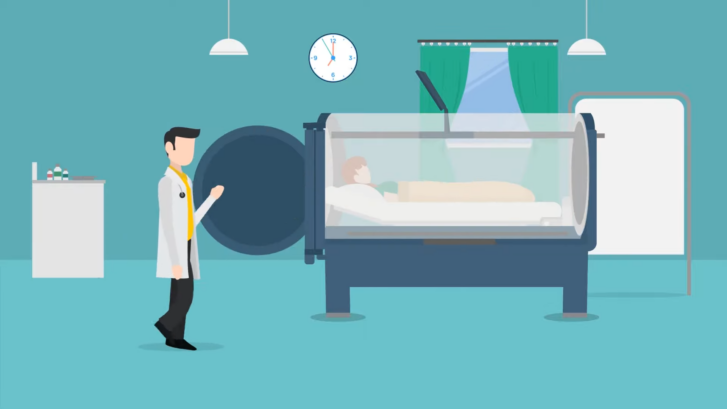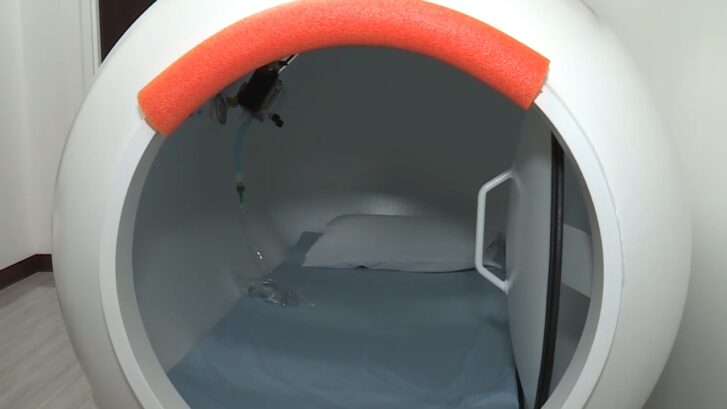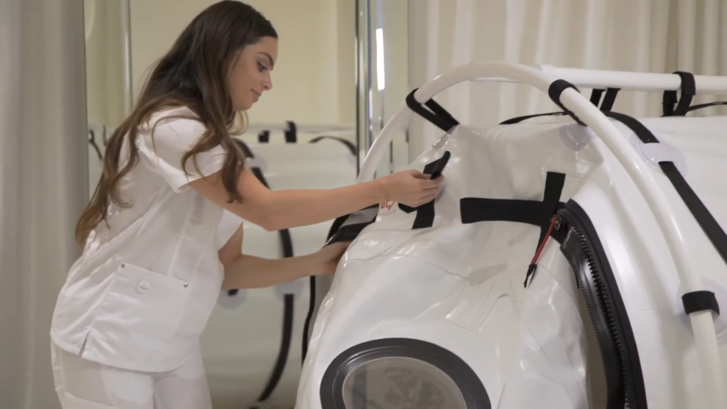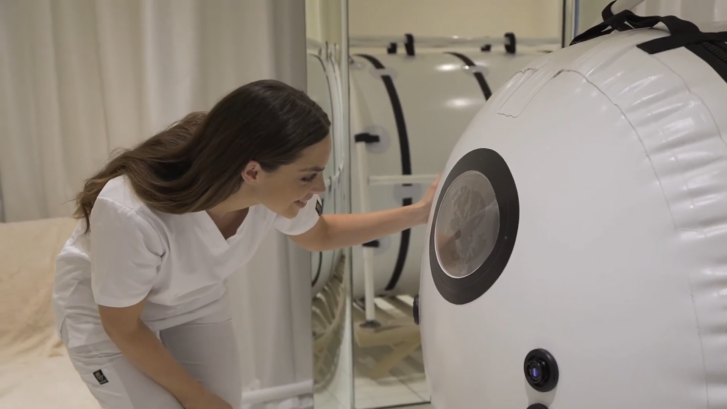In recent years, Hyperbaric Oxygen Therapy (HBOT) has garnered attention as a potential treatment for various conditions, including anxiety and mental health disorders. This therapy involves breathing pure oxygen in a pressurized chamber, a concept traditionally associated with treating decompression sickness in divers.
Its application in mental health, particularly for conditions like anxiety, is an emerging area of interest.
Today, I will discuss the potential of HBOT in treating anxiety, its mechanisms, and how it compares to traditional treatments.
Key Takeaways:
- HBOT involves breathing 100% oxygen in a pressurized chamber, allowing the lungs to absorb more oxygen than at normal air pressure.
- It may positively affect mental health by increasing oxygen supply to the brain, improving blood flow, and a variety of other benefits.
- It is generally safe under professional guidance but comes with a few risks.
How Does HBOT Affect Mental Health?
Hyperbaric oxygen therapy involves inhaling 100% oxygen in a chamber with increased atmospheric pressure. This elevated pressure allows the lungs to absorb more oxygen than would be possible at normal air pressure. The blood carries this extra oxygen throughout the body, aiding in healing and regeneration.
For a detailed look at the types of hyperbaric chambers available for HBOT and their specific features, visit oxyhelp.com, which provides comprehensive information and options for both personal and professional use.
HBOT’s potential effects on mental health stem from its ability to increase oxygen supply to the brain. This increase in oxygen can improve blood flow, reduce brain pressure, and stimulate growth factors.
These changes enhance neuroplasticity, the brain’s ability to form new connections, which is crucial in managing mental health disorders like anxiety. At the same time, a recent research indicates therapy’s effects on improving neurocognitive functions.
HBOT and Anxiety
Potential Benefits
- Reducing Inflammation: Chronic inflammation is linked to anxiety. HBOT can reduce inflammation, including in the brain, potentially alleviating anxiety symptoms.
- Rebalancing Neurotransmitters: HBOT can affect neurotransmitters like serotonin and gamma-aminobutyric acid, which play a role in mood regulation.
- Enhancing Neuroplasticity: By promoting the growth of new brain cells and connections, HBOT may provide longer-term relief from anxiety.
Studies and Research
Emerging studies indicate HBOT’s efficacy in reducing anxiety symptoms. However, outcomes can vary, and more research is needed to fully understand its benefits.
“TBIs can cause a lot of inflammation and immune system problems, and it makes sense that HBOT would treat these symptoms effectively. HBOT can have an incredible healing effect on TBIs.” – Hyperbaric oxygen therapy for traumatic brain injury
Comparing HBOT with Traditional Treatments
Traditional Treatments for Anxiety
Conventional treatments typically include therapy, medication, or a combination of both. These methods have been the mainstay for years, with proven effectiveness for many individuals.
HBOT as an Alternative or Complementary Treatment
Hyperbaric oxygen therapy is not suggested to replace traditional treatments but to complement them. It may be particularly beneficial for those who haven’t found relief through standard methods.
Safety and Considerations
- Safety Profile of HBOT: Hyperbaric oxygen therapy is generally considered safe when performed under professional guidance. It’s not without risks, and appropriate safety measures are essential.
- Consulting Healthcare Professionals: Before considering HBOT for anxiety, it’s crucial to consult with healthcare professionals knowledgeable about both HBOT and anxiety disorders. This ensures a tailored approach to treatment.
Pros and Cons of HBOT for Anxiety
Advantages
- Non-Invasive Nature: Hyperbaric Oxygen Therapy is a non-invasive procedure, making it an attractive option for those hesitant about medications or certain therapeutic interventions.
- Potential for Long-Term Relief: With its impact on neuroplasticity, HBOT may offer more lasting solutions compared to temporary relief from medications.
- Holistic Approach: By increasing overall oxygen levels, HBOT may benefit other bodily functions, potentially improving general health and well-being.
Limitations and Challenges
- Accessibility and Cost: HBOT facilities are not as widespread as traditional treatment centers, and the costs can be significant.
- Need for Further Research: While promising, the field requires more comprehensive studies to establish standardized protocols for treating anxiety with HBOT.
- Individual Variability in Response: Not everyone may experience the same level of benefit from HBOT, necessitating a personalized approach.
Integration with Other Therapies
A Complementary Tool
Hyperbaric Oxygen Therapy should be viewed as a part of a multifaceted treatment approach. It can be combined with therapy, medication, and lifestyle changes to create a comprehensive plan tailored to individual needs.
Case Studies and Anecdotes
Personal stories and case studies, while not as conclusive as scientific research, provide valuable insights into the real-world applications and benefits of HBOT in conjunction with other treatments.
“Therapy provides a higher concentration of oxygen than what’s in natural air. The air that we breathe is typically only made up of around 21% oxygen. The rest consists of other naturally occurring gases, like nitrogen.”
What to Expect in the Future
Ongoing Research and Development
The field is evolving, with ongoing studies exploring how HBOT can be optimized for treating anxiety and other mental health disorders. This research is crucial in shaping future treatment protocols and understanding the full potential of Hyperbaric oxygen therapy.
Potential for Wider Adoption
As awareness grows and more research validates its efficacy, HBOT could become a more commonly recommended treatment for anxiety, potentially changing the landscape of mental health care.
Practical Considerations for Individuals
- Evaluating Suitability: Individuals interested in HBOT should evaluate their specific circumstances, health conditions, and treatment history to determine if this therapy could be beneficial for them.
- The Role of Healthcare Providers: A collaborative approach with healthcare providers is vital. They can offer guidance on integrating HBOT into existing treatment plans and monitor progress.
FAQs
How Long Does a Typical HBOT Session Last?
A typical session lasts about 60 to 90 minutes, depending on the specific protocol recommended by the healthcare provider.
Can HBOT Cause Claustrophobia Due to Being in A Chamber?
Some individuals may feel claustrophobic in a chamber. However, modern chambers are designed to be more spacious and comfortable, and therapists often provide techniques to help manage such feelings.
Is HBOT Suitable for Children with Anxiety?
Hyperbaric Oxygen Therapy can be used for children, but it requires careful consideration and a specialized approach. Always consult a pediatrician and a Hyperbaric Oxygen Therapy specialist before considering it for a child.
Will Insurance Cover the Cost of HBOT for Anxiety?
Insurance coverage for Hyperbaric Oxygen Therapy varies widely and often depends on the condition being treated.
Currently, many insurance plans do not cover HBOT for anxiety, but this may change as more research emerges. Always check with your insurance provider for the most current information.
Final Words
Hyperbaric Oxygen Therapy presents a promising, albeit still emerging, avenue for treating anxiety and enhancing mental health.
With its unique mechanism of increasing brain oxygenation and stimulating neuroplasticity, HBOT could potentially offer relief to those who haven’t benefited from traditional treatments.
However, it’s essential to approach this therapy under professional guidance and as part of a broader treatment plan. As research evolves, we may see HBOT becoming a more integral part of mental health treatment protocols.


